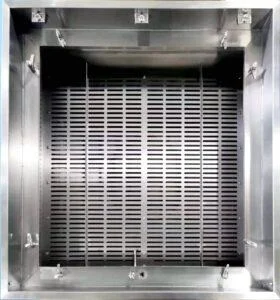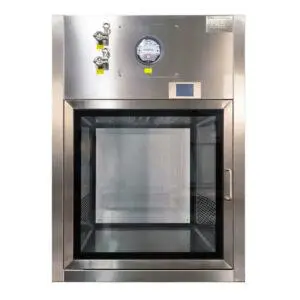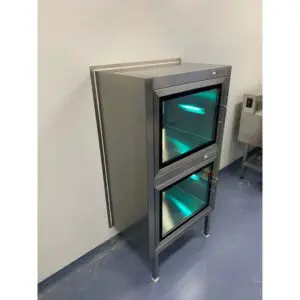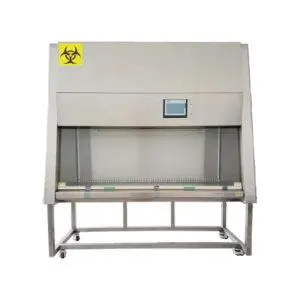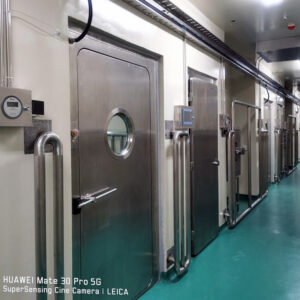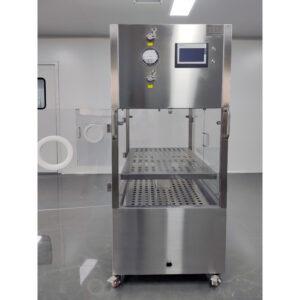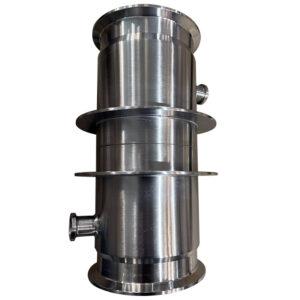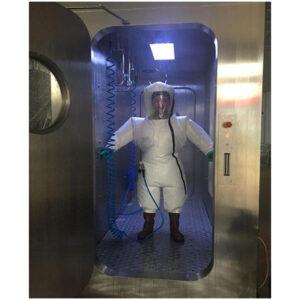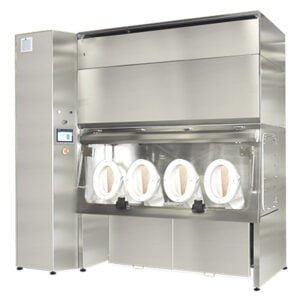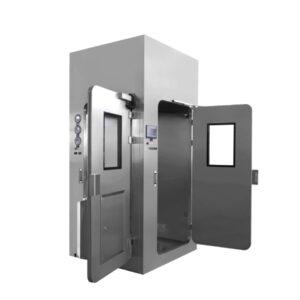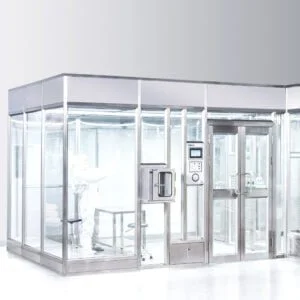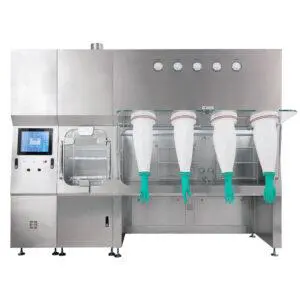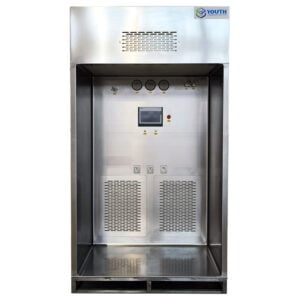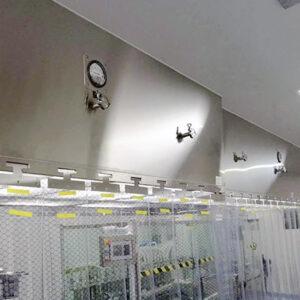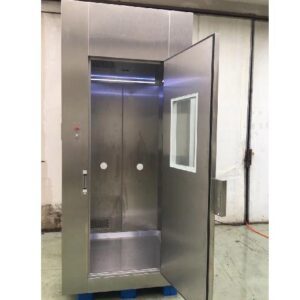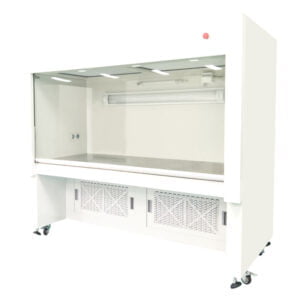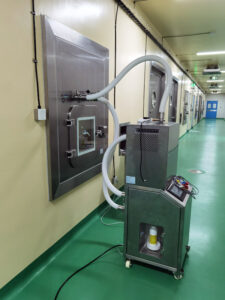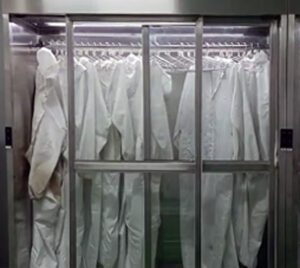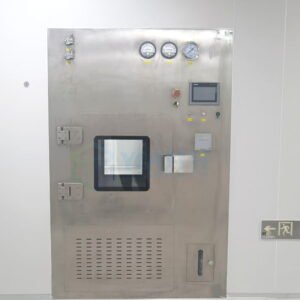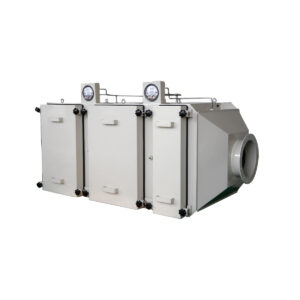The Evolution of Modern Autopsy Station Safety
The forensic laboratory setting demands a delicate balance between functionality and protection. When I first walked through the doors of a state-of-the-art forensic facility last year, what struck me wasn’t just the clinical efficiency of the space, but how seamlessly safety features had been integrated into every aspect of the autopsy stations. These weren’t the stark, intimidating environments often portrayed in television crime dramas – they were thoughtfully designed workspaces where pathologists and technicians could perform their critical work with minimized risk.
The evolution of autopsy stations reflects our growing understanding of the hazards inherent in forensic practice. Historically, these workspaces were primarily designed for functionality with limited consideration for the various exposure risks faced by personnel. Today’s modern autopsy stations incorporate multiple layers of protection against biological, chemical, and physical hazards while maintaining operational efficiency.
The safety features found in contemporary autopsy stations aren’t merely add-ons or afterthoughts – they represent fundamental design elements that protect staff from potential exposure to bloodborne pathogens, harmful chemicals, and ergonomic injuries. These advancements are particularly evident in solutions like the wall-mount autopsy station with center sink that incorporates numerous safety innovations within a compact, efficient design.
As forensic science continues to advance, the equipment supporting this field must evolve accordingly. Let’s examine the seven key safety features that define today’s state-of-the-art autopsy stations and understand how they protect the professionals who provide essential forensic and medical examination services.
Comprehensive Ventilation Systems
Perhaps the most critical safety feature in any modern autopsy station is its ventilation system. “Proper ventilation isn’t optional – it’s absolutely essential,” Dr. Michael Baden, renowned forensic pathologist, emphasized during a recent forensic science conference I attended. “The microscopic aerosolization of bodily fluids during autopsy procedures creates an invisible risk that only proper air handling can address.”
Today’s advanced autopsy stations incorporate downdraft ventilation systems that pull air downward through the work surface rather than allowing it to rise into the breathing zone of personnel. According to specifications from YOUTH Tech, these systems typically provide between 100-150 feet per minute of directional airflow—sufficient to capture aerosols and odors at their source before they can spread.
The technical aspects of these systems are quite impressive. Modern stations feature:
- Downdraft ventilation zones that create negative pressure around the examination area
- HEPA filtration systems capable of removing 99.97% of particles 0.3 microns or larger
- Adjustable air volume controls that can increase ventilation during high-risk procedures
- Seamless integration with facility HVAC systems to ensure proper air exchanges
One facility manager I spoke with noted that their recently installed system maintains 12-15 air changes per hour in their autopsy suite—significantly exceeding the CDC recommendation of 6-12 air changes. “We’ve seen a measurable decrease in reported respiratory irritation among staff since upgrading our ventilation,” she mentioned.
These systems do present maintenance challenges. HEPA filters require regular inspection and replacement, and airflow patterns must be periodically verified to ensure proper function. When a facility neglects these maintenance requirements, the effectiveness of even the best-designed system will degrade over time.
The integration of these ventilation features within compact workstation designs is particularly impressive. The wall-mount autopsy stations with enhanced ventilation features managed to solve significant spatial challenges while maintaining optimal airflow dynamics—a testament to modern engineering innovation in forensic equipment design.
Advanced Material Construction
The materials used in autopsy station construction form a critical first line of defense against contamination and chemical exposure. Modern autopsy stations utilize specialized materials that balance durability, resistance to chemicals, and ease of sanitation.
Medical-grade stainless steel has emerged as the gold standard for autopsy station fabrication with enhanced safety features. Its non-porous surface prevents bacterial infiltration, while its chemical resistance withstands repeated exposure to disinfectants, formalin, and other potentially corrosive substances used in autopsy procedures.
The technical specifications of these materials reveal their superior protective qualities:
| Material Property | Specification | Safety Benefit |
|---|---|---|
| Stainless Steel Grade | 304 or 316L | Corrosion resistance, durability |
| Surface Finish | #4 (180 grit) satin finish | Reduced bacterial adhesion, easier cleaning |
| Thickness | 14-16 gauge | Structural integrity, resistance to deformation |
| Weld Quality | Continuous, ground smooth | Eliminates crevices where contaminants could collect |
| Edge Treatment | Radiused or hemmed | Prevents injuries from sharp edges |
“The transition from older materials like tile and grout to seamless stainless surfaces represented one of the most significant safety advances in autopsy facility design,” notes Dr. Judy Melinek, forensic pathologist and author. “Those grout lines were impossible to properly sanitize and harbored dangerous pathogens.”
The construction methods are equally important. Modern fabrication techniques produce autopsy stations with minimal seams and crevices where biological material could accumulate. Corners and transitions are radiused rather than sharp, facilitating thorough cleaning while eliminating cut hazards.
Some stations now incorporate antimicrobial copper alloy touch surfaces in strategic locations. Research indicates these materials can self-sanitize, killing more than 99.9% of bacteria within two hours of exposure. Though not a replacement for proper cleaning protocols, these materials provide an additional safety barrier between cleaning cycles.
The material construction of the wall-mount autopsy station exemplifies these principles, with its seamless fabrication and chemical-resistant surfaces ensuring both user protection and longevity of the equipment. The investment in these higher-quality materials ultimately supports both safety goals and long-term cost efficiency through extended service life.
Ergonomic Design Elements
The conversation about autopsy station safety often centers on chemical and biological hazards, but ergonomic considerations are equally critical for protecting staff from cumulative trauma and acute injuries. Modern stations incorporate numerous design features specifically addressing the physical demands of forensic examination.
Height adjustability stands as perhaps the most important ergonomic feature in contemporary autopsy workstations. Procedures often last several hours, and stationary work at an improper height creates significant risk for musculoskeletal disorders. Advanced stations offer hydraulic or electronic height adjustment, accommodating personnel of different statures and allowing position changes throughout procedures to reduce static loading.
During my observation of a recent autopsy procedure, I noticed how the pathologist periodically adjusted the table height—raising it slightly for detailed examination work and lowering it when more force was needed for certain procedures. “That adjustment capability saves my lower back,” she commented afterward. “In my previous facility without adjustable stations, I was taking anti-inflammatories daily for back pain.”
Beyond height adjustability, other key ergonomic features include:
- Radiused edges to eliminate pressure points during leaning
- Strategic placement of controls within easy reach
- Thoughtful sink depth design to prevent excessive bending
- Non-slip flooring surfaces in the immediate work area
- Proper task lighting to reduce eye strain and improve precision
A recent study published in the Journal of Forensic Sciences found that pathologists working at ergonomically designed stations reported 43% fewer musculoskeletal complaints compared to those using conventional stations. This statistic underscores the significant health impact of these design considerations.
The wall-mounted autopsy station design offers particular ergonomic advantages through its open undercounter space, which allows personnel to position themselves optimally during procedures without obstacles impeding their stance or movement. This unrestricted positioning reduces awkward postures that contribute to fatigue and injury risk.
Weight capacity represents another critical safety aspect often overlooked in discussions of autopsy equipment. Modern stations provide substantial load ratings, typically exceeding 500 pounds, ensuring structural integrity during procedures involving bariatric subjects. This capacity prevents the catastrophic failure risks associated with underrated equipment.
Integrated Water and Drainage Systems
Water management systems within autopsy stations present unique safety challenges that modern designs address through multiple integrated features. The potential for contamination, backflow into building water systems, and improper waste handling have all influenced current safety standards in this area.
Modern autopsy stations incorporate sophisticated backflow prevention systems that create physical separation between the facility’s potable water supply and potentially contaminated autopsy station water. These systems typically employ air gaps or reduced pressure zone backflow preventers that comply with plumbing codes while providing an essential safety barrier.
Temperature control represents another critical water system safety feature. Scald prevention mixers limit maximum water temperature to approximately 110°F (43°C), protecting personnel from burn injuries while maintaining sufficient temperature for effective cleaning. Some advanced models incorporate thermostatic mixing valves that maintain consistent temperature regardless of pressure fluctuations in the supply lines.
The drainage systems in contemporary autopsy stations deserve particular attention for their safety features:
- Large diameter (typically 2-3 inch) waste lines to prevent clogging
- Deep sink basins with removable strainer baskets to catch tissue fragments
- Sloped surfaces directing all fluids toward proper drainage points
- Optional tissue trap systems that prevent larger biological materials from entering the plumbing system
One particularly innovative feature I observed in a recently installed wall-mounted autopsy station design with integrated plumbing was a double containment waste system. This system provides secondary containment for the primary waste line, creating redundant protection against leaks that could create both safety and biohazard issues.
“Proper waste handling within the autopsy station is where many facilities fall short,” observed an OSHA industrial hygienist during a facility inspection I witnessed. “The drainage system needs to address both safety for personnel and environmental compliance concerns.”
This dual requirement presents challenges, especially for facilities looking to retrofit older buildings. One laboratory manager described their solution: “We installed a specialized waste treatment system that connects directly to our autopsy stations. It pre-treats effluent before it enters the municipal system, addressing both safety and regulatory requirements.”
The water control systems in these stations typically feature hands-free operation through knee or foot controls, eliminating cross-contamination risks associated with touching faucet handles during procedures. This seemingly simple feature substantially reduces infection transmission risk while improving operational efficiency.
Electrical Safety and Control Systems
The integration of electrical components into the inherently wet environment of an autopsy station presents substantial safety challenges that require specialized design approaches. Modern autopsy stations address these concerns through multiple protective systems that prevent electrical hazards while providing necessary functionality.
Ground fault circuit interrupter (GFCI) protection represents the foundation of electrical safety in these environments. All electrical components within the autopsy station zone, including lighting, height adjustment controls, and any powered accessories, must connect through GFCI protection that instantly detects current leakage and interrupts the circuit before dangerous exposure can occur.
Beyond basic GFCI protection, contemporary autopsy stations incorporate:
- Low-voltage (typically 24V) control systems for user interfaces
- Waterproof enclosures with appropriate IP (Ingress Protection) ratings
- Isolated circuits separating critical and non-critical systems
- Redundant grounding connections to prevent static buildup
- Emergency shutdown capabilities accessible from multiple positions
The growing integration of digital technology into autopsy procedures introduces new considerations for electrical safety. Many modern stations now include provisions for powering imaging equipment, dictation systems, or digital scales. These integrations require thoughtful design to maintain the waterproof integrity of the workspace while providing necessary power access.
“When specifying autopsy equipment, we evaluate the electrical safety features as rigorously as the biological containment capabilities,” noted a facility director during a recent equipment procurement discussion I participated in. “One electrical safety failure can create risks just as serious as biological exposure.”
The control systems for autopsy station features with advanced safety integration typically employ membrane-sealed switches that prevent fluid ingress while providing tactile feedback for users. These interfaces allow operation even when wearing gloves, an important consideration for maintaining barrier protection during procedures.
One innovative approach I’ve observed in newer installations involves the complete removal of electrical components from the wet work zone. These designs locate all controls and power connections on an adjacent dry wall, connected to the autopsy station through sealed conduits. This approach eliminates electrical hazards at their source rather than merely providing protection against them.
Maintenance accessibility presents a persistent challenge for these systems. Electrical components require periodic inspection and occasional replacement, but access panels can create cleaning challenges and potential contamination points. The best designs balance these competing needs through thoughtful component placement and specialized access methods that maintain containment integrity.
Sanitation and Disinfection Capabilities
The ability to thoroughly clean and disinfect autopsy stations between procedures represents a foundational safety requirement. Modern stations incorporate multiple design elements specifically addressing the challenges of biological decontamination in the forensic environment.
Material selection provides the first line of defense in sanitation capability. The non-porous surfaces of medical-grade stainless steel prevent bacterial infiltration while withstanding repeated exposure to harsh disinfectants. The 304 or 316L stainless grades commonly used in premium autopsy stations offer exceptional resistance to the chlorine compounds typically used for disinfection.
Beyond material selection, structural design elements significantly impact cleaning efficiency and effectiveness:
- Coved corners that eliminate ninety-degree angles where contaminants could accumulate
- Continuous welded seams rather than mechanical joints or overlapping surfaces
- Minimal horizontal surfaces where fluids or debris could collect
- Removable components designed for easy cleaning and autoclave sterilization
- Sloped surfaces that promote complete drainage during washing
Some advanced autopsy stations now incorporate integrated spray hose systems specifically designed for surface decontamination. These systems provide appropriate pressure and pattern for effectively removing biological material without creating aerosolization risks. The hose systems integrate with the station’s drainage to ensure that all wash water enters the appropriate waste stream.
“The ability to thoroughly clean an autopsy station directly correlates with safety outcomes,” explained Dr. Melinek during a training session I attended. “The design elements that facilitate cleaning aren’t cosmetic—they’re functional safety features that protect the next person using that equipment.”
The wall-mounted autopsy station with integrated sanitation features exemplifies this approach, with its seamless construction eliminating harboring points for contaminants and its open design providing access to all surfaces during cleaning procedures.
Some facilities have adopted UV-C disinfection systems as supplementary protection between manual cleaning procedures. These systems can inactivate pathogens in areas that might be missed during manual cleaning, though they don’t replace proper decontamination protocols. The integration of these systems requires careful planning to ensure adequate exposure while protecting surrounding materials from UV degradation.
A persistent challenge in autopsy station sanitation involves the balance between thorough cleaning and equipment longevity. The harsh chemicals necessary for proper disinfection can potentially damage some components over time. Leading manufacturers address this through material selection that balances chemical resistance with functional requirements, along with clear guidance on appropriate cleaning agents and methods.
Regulatory Compliance and Safety Standards
The safety features of modern autopsy stations exist within a complex regulatory framework that establishes minimum requirements while encouraging best practices. Understanding these standards provides important context for evaluating the safety features of specific equipment.
Multiple regulatory bodies influence autopsy station design requirements:
| Regulatory Body | Focus Area | Key Requirements |
|---|---|---|
| OSHA | Occupational safety | Exposure controls, bloodborne pathogen protection, ergonomics |
| CDC | Infection control | Decontamination standards, ventilation requirements |
| NIOSH | Research and recommendations | Engineering control hierarchies, exposure limits |
| College of American Pathologists | Accreditation standards | Facility and equipment requirements for accredited programs |
| Local building codes | Structural and utility requirements | Plumbing, electrical, and ventilation specifications |
The Bloodborne Pathogens Standard (29 CFR 1910.1030) provides the regulatory foundation for many autopsy station safety features. This OSHA standard requires employers to provide engineering and work practice controls to eliminate or minimize employee exposure to bloodborne pathogens. Modern autopsy stations incorporate numerous features specifically addressing these requirements.
“Regulatory compliance isn’t just about checking boxes,” noted an OSHA industrial hygienist during a compliance seminar I attended. “The standards establish minimum requirements, but facilities should view these as starting points rather than ultimate goals for their safety programs.”
The specialized ventilation requirements for autopsy facilities illustrate this principle. While the CDC recommends 12 air changes per hour in autopsy rooms, many facilities exceed this standard based on risk assessments and operational requirements. Similarly, the chemical resistance of surfaces often exceeds minimum standards to address the specific agents used in a particular facility.
Autopsy stations featuring comprehensive safety designs simplify regulatory compliance by incorporating features that meet or exceed requirements across multiple standards. The autopsy station with integrated safety systems demonstrates this approach, with its ventilation, material selection, and contamination controls addressing numerous regulatory requirements within a single integrated design.
The accreditation requirements for teaching institutions and certain forensic programs add another layer of standards. The College of American Pathologists accreditation checklist includes specific requirements for autopsy facilities that influence equipment selection and implementation. Facilities seeking or maintaining accreditation must consider these requirements alongside regulatory standards.
One challenge in this area involves the sometimes contradictory requirements between different regulatory bodies. For example, energy efficiency standards may conflict with ventilation requirements, creating design challenges for facilities. The most successful implementations resolve these conflicts through innovative approaches rather than compromising safety.
Future Directions in Autopsy Station Safety
The evolution of autopsy station safety features continues as new technologies emerge and our understanding of workplace hazards develops. Several promising trends suggest the direction of future safety innovations in this specialized equipment category.
Integrated digital technologies are beginning to transform the autopsy environment, with potential safety benefits alongside their operational advantages. Digital imaging systems reduce the need for physical specimen handling in some situations, potentially decreasing exposure risks. Similarly, voice-activated control systems eliminate touch points that could transmit contamination during procedures.
Advancements in material science offer promising developments for autopsy station surfaces. New composite materials with enhanced antimicrobial properties could provide persistent protection between cleaning cycles. Some researchers are exploring self-cleaning surfaces that use photocatalytic reactions to break down organic materials when exposed to certain light wavelengths.
Automation represents another frontier in autopsy station safety. Automated specimen handling systems, already implemented in some diagnostic laboratories, could eventually extend to the autopsy environment. These systems would reduce direct contact with potentially infectious materials, though their implementation in the complex and variable autopsy setting presents significant engineering challenges.
The integration of safety monitoring technologies may provide real-time feedback on environmental conditions. Sensors detecting airborne pathogen levels, chemical concentrations, or ventilation performance could alert personnel to developing hazards before exposure occurs. These systems would complement rather than replace existing safety features.
Enhanced ergonomic designs will likely continue developing, with greater emphasis on reducing cumulative trauma injuries. Computer modeling of workplace movements and stresses enables equipment designers to identify and address previously unrecognized ergonomic hazards. The resulting design improvements could significantly reduce the musculoskeletal injuries that currently affect many forensic professionals.
For facilities considering equipment upgrades, these emerging trends suggest focusing on flexibility and adaptability in autopsy station design. Selecting equipment that can accommodate future technological integration will maximize long-term value while ensuring access to evolving safety features.
The fundamental principles guiding autopsy station safety—containment, decontamination, ergonomics, and exposure prevention—will remain constant even as implementation methods evolve. The most successful designs will continue balancing these requirements with operational efficiency and budget considerations.
As autopsy practices continue evolving in response to changing disease profiles and technological capabilities, the equipment supporting these essential procedures will likewise advance. The wall-mounted autopsy station design exemplifies the current state of this evolution, with its comprehensive integration of multiple safety features in an efficient, practical configuration. Future developments will build upon this foundation, continuously improving safety for forensic professionals.
Frequently Asked Questions of Autopsy Station Safety Features
Q: What are the key Autopsy Station Safety Features?
A: Modern autopsy stations incorporate several safety features to ensure a safe working environment. These include ventilation systems to manage hazardous fumes, integrated drainage systems to handle bodily fluids, adjustable height settings for ergonomic comfort, and storage options for personal protective equipment (PPE). Such features help prevent contamination and reduce the risk of injury during procedures.
Q: How do ventilation systems contribute to Autopsy Station Safety Features?
A: Ventilation systems are crucial in modern autopsy stations, serving to remove hazardous fumes and unpleasant odors. These systems maintain a safe working environment by filtering the air in real-time, thus reducing exposure to harmful gases. This feature is especially important for preventing respiratory health issues among pathologists and technicians.
Q: What role does personal protective equipment play in Autopsy Station Safety Features?
A: Personal protective equipment (PPE) is a vital component of autopsy station safety. PPE includes items like gloves, gowns, and masks, which protect against biohazards such as bodily fluids and airborne pathogens. Proper use of PPE is essential in reducing the risk of exposure during autopsy procedures.
Q: How do integrated sinks enhance Autopsy Station Safety Features?
A: Integrated sinks in autopsy stations provide a convenient and dedicated space for cleaning and hygiene maintenance. They help prevent contamination by allowing for the immediate disposal of hazardous materials and the thorough cleaning of equipment. This feature is critical in maintaining a sterile environment and preventing the spread of infectious agents.
Q: What ergonomic features do modern Autopsy Stations offer for safety?
A: Modern autopsy stations often include ergonomic features such as adjustable height settings. These features allow pathologists and technicians to position the autopsy table according to their comfort, reducing strain during long procedures. This ergonomic design helps prevent musculoskeletal injuries and enhances efficiency in the workplace.
Q: How are contaminated materials handled in autopsy stations to ensure safety?
A: Autopsy stations are equipped with specialized waste disposal systems to manage contaminated materials safely. These systems include built-in grinders and drainage outlets designed to efficiently handle dissected tissue remnants. This ensures that hazardous materials are disposed of without posing a risk to staff or the environment.
External Resources
Since there are no exact matches using the keyword “Autopsy Station Safety Features,” I’ve compiled a list of closely related resources valuable for researching safety features of autopsy stations:
- Wall Mount Autopsy Station with Center Sink by YOUTH Clean Tech – Features include downdraft ventilation and safety measures like wearing proper PPE and adhering to standard autopsy protocols[2].
- Mortech Wall Mount Autopsy Station by Ares Scientific – Includes safety features such as waterproof electrical outlets and a heavy-duty waste disposer, emphasizing ease of use and safety[5].
- A State-of-the-Art Embalming and Autopsy Station – Discusses safety through ventilation systems designed to remove hazardous fumes like formaldehyde[3].
- Autopsy Table by Mixta Medikal – Highlights the importance of ventilation systems in maintaining a safe work environment for autopsy procedures[1].
- Bio-Stainless Steel Autopsy Stations by YOUTH Clean Tech – Offers insights into the safety benefits of stainless steel construction, including ease of cleaning and resistance to corrosion[2].
- Safety Protocols in Forensic Pathology Laboratories – While not specific to autopsy stations, it covers broader safety measures in environments where autopsy stations are used, including proper ventilation and PPE usage[2].
No website specifically titled as requested was found, so related resources are included for relevance.
Related Contents:
- Chemical Shower Room Ventilation: Top 5 Systems
- 9 Critical Safety Features of Modern Cleanroom Sinks
- Lab Safety Equipment Checklist: Essential Items
- Sterility Test Isolator Cleaning: Best Practices 2025
- 5 Critical Safety Features in Modern Weighing Booths
- Boost Efficiency: Optimizing Cleanroom Sink Workflow
- Pathogen Exposure Prevention: Lab Safety Guide
- Mobile LAF Cart Cleaning: Disinfection Protocols
- Biocontainment Equipment: Essential Tools


